Readjusting to “Normal Life” After Spending a Year in the Wilderness
My husband, Dave, and I spent a year in Minnesota’s Boundary Waters Canoe Area Wilderness – September 23, 2015 to September 23, 2016. For those of you who are unfamiliar, the BWCAW is a 1.1 million acre federally designated Wilderness Area in northern Minnesota. That’s Wilderness with a capital “W”. It is a maze of lakes, rivers, wetlands and road-less forests—a canoeist’s paradise. It is the largest Wilderness Area east of the Rockies and north of the Everglades.
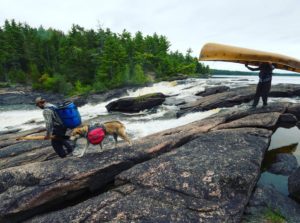
We both explored the BWCAW as kids and teenagers. Most of our adult lives have been spent working in the BWCAW as canoeing guides in the summer and dogsledding guides in the winter. When Dave and I learned that a Chilean mining company, Antofagasta, wanted to build a copper mine called Twin Metals near the edge of the BWCAW we teamed up with the Campaign to Save the Boundary Waters. Spending an entire year in the Boundary Waters was our way to contribute to the cause.
It was not an expedition in the traditional sense, geared toward traveling from point A to point B in X amount of time; rather it was about bearing witness to the very land and water we were fighting to protect. Through social media, blog posts, podcasts and articles, we kept the Wilderness in peoples’ minds for a year. We witnessed the change of the seasons, wandering wolf packs and small miracles like the metamorphosis of dozens of dragonflies. We grew accustomed to living outside and our senses grew sharper. Our personal connection to the land deepened.
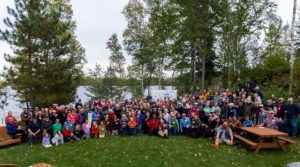
When it came time to exit the BWCAW, we had some trepidation. In fact, we were more nervous about leaving the Wilderness than we had been about entering it for a year. We hit the ground running once we exited. Within 12 hours we were driving down Highway 1 in our car and within three days we were on a plane flying to Washington D.C. to advocate for the Boundary Waters. In the months following our departure from the BWCAW we’ve given dozens of presentations in seven states. Everywhere we go, people ask, “what’s it like to be back in society?” and, “how are you adjusting?” Either they relate in some way—having been on a long trip themselves or they can’t fathom what it was like to have spent a year in the Wilderness. I’ve tried to come up with succinct answers that give them some idea. Something like—“it’s been kind a tough, but we’re used to it now.” Dave might tell them about how driving again was just like riding a bike.
We were affected in ways we never really expected. The biggest challenge for our readjustment was actually getting used to falling asleep inside a house. Our bodies had become so accustomed to the routine of the trail, our senses so attuned to the woods that sleeping indoors felt like the most unnatural thing we could do. We were abruptly cut off from the sounds of wind rustling leaves in the trees, water lapping against shore. We no longer smelled the freshly fallen pine needles in the duff or the onset of rain. We were surrounded by artificial light and unnatural sounds. Getting used to falling asleep indoors took several weeks—and we still notice that sleep best if we leave a window open or better yet, we’re out camping again.
We were overwhelmed in crowds of people. No nervous breakdowns occurred, but we found ourselves taking breaks outside crowded rooms. I would mentally prepare myself (more than I ever used to) for presentations or events and balance out that time with alone time going for a walk or a run.
As we’ve re-acclimated to this world of cars, grocery stores and concrete, we sometimes catch ourselves taken aback by the absurdity of it. It is like the moment in a lucid dream when the awareness of the fact that you are dreaming settles in. We’ll glance at each other, maybe roll our eyes, sometimes laugh, rarely do we even need to say anything. One such moment occurred when we were staying at a hotel. We just sat down to eat our preservative-laden, unwholesome continental breakfast when our attention turned to the television in the far corner of the room. It was a morning talk show and the hosts were talking about nothing—nothing of importance or interest. No news. Just small talk on national television. Is this really the norm?
Other moments have come in grocery stores as we’re both overwhelmed with the seemingly endless possibilities for what we could purchase and prepare for dinner. How many different states—and countries—did this food come from? And it’s all here for me to purchase with a little plastic card? Crazy.
I’m reminded when our friends brought their two-month old daughter into the Boundary Waters to see us for a brief lunchtime visit. Apparently, when their daughter is inside she tends to be fussier. Almost without fail, if they need to sooth her, they carry her outside and she instantly relaxes. That sums up how Dave and I felt upon reentering civilization after spending a year in the Wilderness. Everyone is hardwired to be in nature. Evolutionarily speaking, nature is what we know—what our bodies crave even though most of us don’t even know it.
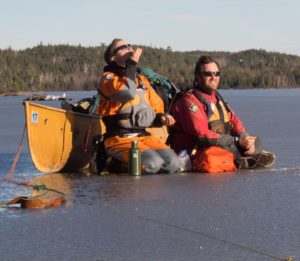
For those who have been fortunate enough to have had this nature switch flipped on, they understand. Maybe they aren’t consciously aware of it, but there are physiological indicators as one takes a walk in the woods or goes on a weekend camping trip. Blood pressure drops, the prefrontal cortex settles down and cortisol levels drop when people are immersed in nature. While our personal readjustment out of the Wilderness has been challenging and stressful, there are lessons to be learned from the process.
I’m glad to know that seeking out little pieces of the natural world help to de-stress. Small things like opening a window and hearing birdsong again, going for a run along a lakeshore or sitting in the grass at a park can make a big difference in anyone’s day. Let these little pieces of nature remind you of time spent in truly wild places. Those who appreciate and use our public lands like the Boundary Waters Canoe Area Wilderness bear the responsibility of speaking up for them when they are threatened. To learn more about A Year in the Wilderness, the threat to the BWCAW and how you can help, check out http://savetheboundarywaters.org.
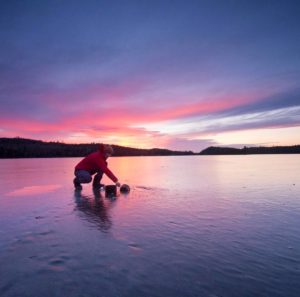
About the author
Amy Freeman is an avid outdoorswoman based out of Minnesota. Amy and her husband Dave have toured with their canoe covered in hundreds of supportive signatures to Washington D.C. and various other states to raise awareness about impending threats to the BWCAW. The duo is working on a book about A Year in the Wilderness and we can’t wait to read it! Follow Amy and Dave on Instagram to see what they’re up to now.

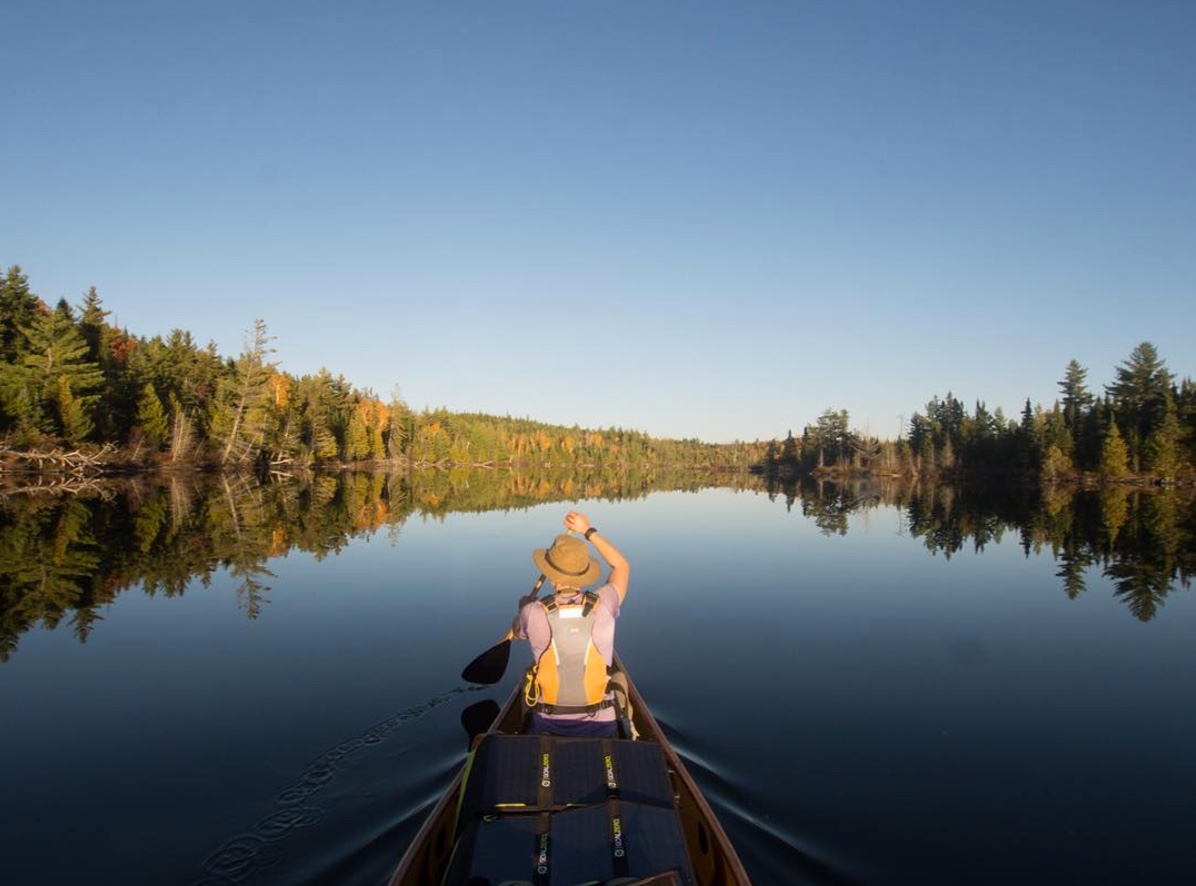
Great post! How could I live in MN and not know about this? Long live the Boundary Waters, pure and beautiful!
Hi Peggy! Dave and Amy’s experience is so unique and wonderful! Check out their Instagram @freemanexplore to see pictures and little glimpses into their live in the BWCA during “A Year in the Wilderness!” Thanks for reading 🙂 -Hatie
Even though this is a for ladies only page, (;-), I cannot help but leave a comment. Amy’s mention of the surprising need to readjust to sounds of civilization after some isolated days in the wilderness brought back a 61 year-old memory of mine. It happened on my way out of the Boundary Waters after a first of many to follow wilderness canoe camping trips. With my companion, a 13-year old nephew, we had just cleared the last step of wilderness to enter “Big Sag” out of the Northeast Arm waters. The lake was rough and we took water over the sides until we reached the shelter of a row of islands on the south bank. Some settlers had cottages (to be gone in the years following because of the work and move to return them back to the wilderness) and we were disturbed to see persons on docks fueling and warming up engines on fast cruisers. Then, there was an extreme, loud explosion, followed by another! Someone was target shooting! (To this day, I HOPE it was target shooting!) The piercing sound echoed and re-echoed up and down the pine covered shoreline. Our jumped reaction almost caused us to upset the loaded canoe! We were quickly reminded we had returned to the real world. Forever, I long to return to the wilderness, where within the tent and in the total blackness of the night, the silence is so pure you can hear a single, falling pine needle, touch and kiss the top of the tent. I am pleased and thank those who accomplished removing those one-time cabins and intruders on Saganaga Lake. Jerry Zimmerman – West Allis, Wisconsin
Hi Jerry! It warms my heart that you read Amy’s piece! Whoa is for everyone – not just women! I had a similar experience coming out of the BWCA on Snowbank. Once we passed the non-motorized part suddenly it was all noise and people! Makes you want to go back to your last campsite and pick another route! Cheers to cherishing those quieter paddles and enjoying the return to civilization when we must. – Hatie
Wow – what an experience! The bit re the grocery store reminded me of when I got back to Canada after volunteering for three months in a Guyanese Amerindian village. I, too, was overwhelmed by the grocery store – what freaked me out the most was the perfect pyramid of perfect looking oranges. I couldn’t believe the absurdity of it!
Ahhhhhh the BWCAW! I spent one short week there with my ex-hubby in 2010. It was magical (didn’t save our marriage, but was magical nonetheless!). We didn’t see a single human for 4 full days, and when we reemerged into a lake with boats and people, it was shocking. And that’s just after one week! I can’t imagine how it would feel to re-enter after a year. What a wonderful experience and adventure for this couple. Love it!
Hi Liz! I am very familiar with that sudden reintegration to society feeling after a trip. It’s wild! The BWCA is magical and beautiful. I’m glad you enjoyed it and Amy’s story. What an amazing journey they took and for such an important cause. Happy trails! – Hatie